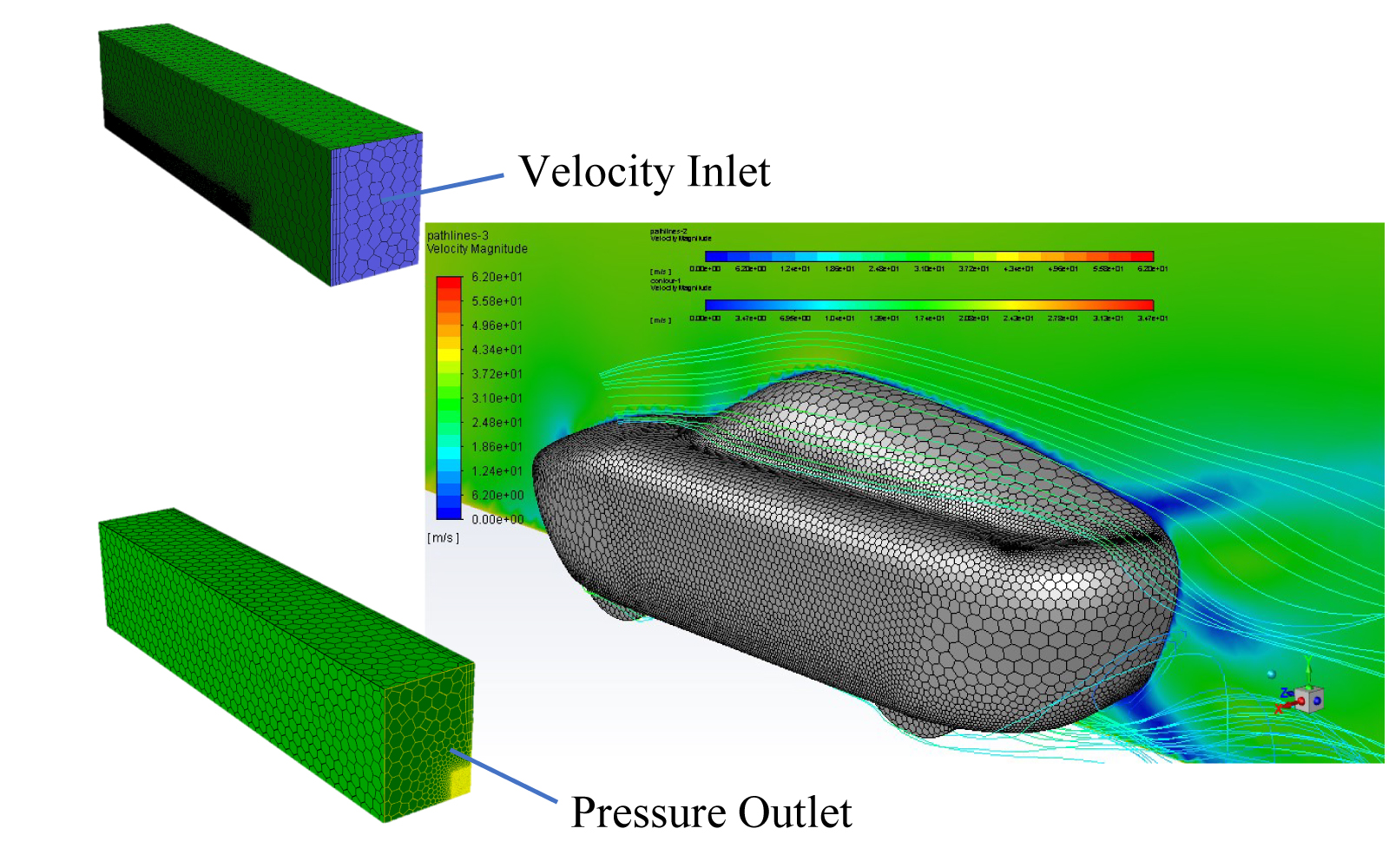
CFD MODELLING OF VOLTACAR ELECTRIC VEHICLE BODY FOR THE MOST EFFICIENT DRIVING CONDITIONS
Corresponding Author:
Mehmet Fatih KAYA
DOI Number https://doi.org/10.52924/DGHR8227
Received: 05.11.202
Accepted 26.11.202
Published 17.01.202
Summary:
In recent years, prices of fossil fuels, greenhouse gases, and the need for sustainable energy sources is increasing day by day. Thus, electric vehicles are seen as a promising candidate in the market due to its low-cost and cleaner fuel option thanks to renewable energy sources. Moreover, aerodynamics is one of the most important criteria to consider while designing an automobile for the most efficient driving conditions. For this reason, vehicle developers are studying to reduce drag resistance of the body to improve driving efficiency. On the other hand, Computational Fluid Dynamics (CFD) is one of the vital tools for the automotive industry to obtain low-cost results before prototyping of any product. In this study, the aerodynamic characteristics of VoltaCAR electric vehicle is numerically investigated to obtain the best driving velocity. This car participates the TUBITAK-Electromobile car race every year to achieve low fuel consumption for one-hour driving. Thus, it is aimed that to minimize the resistance of the air hitting from the front, side, and roof of the vehicle. In the numerical model, polyhedral mesh structure is preferred to obtain faster convergence with fewer iterations, and shorter computation time is obtained compared to the tetrahedral mesh method. The aerodynamic drag coefficient (Cd) of the car model is computed as approximately 0.11 at 22.22 and 27.78 m/s. The best velocity values are selected as 22.22 and 27.78 m/s due to their lower Cd.
Graphical Abstract:
